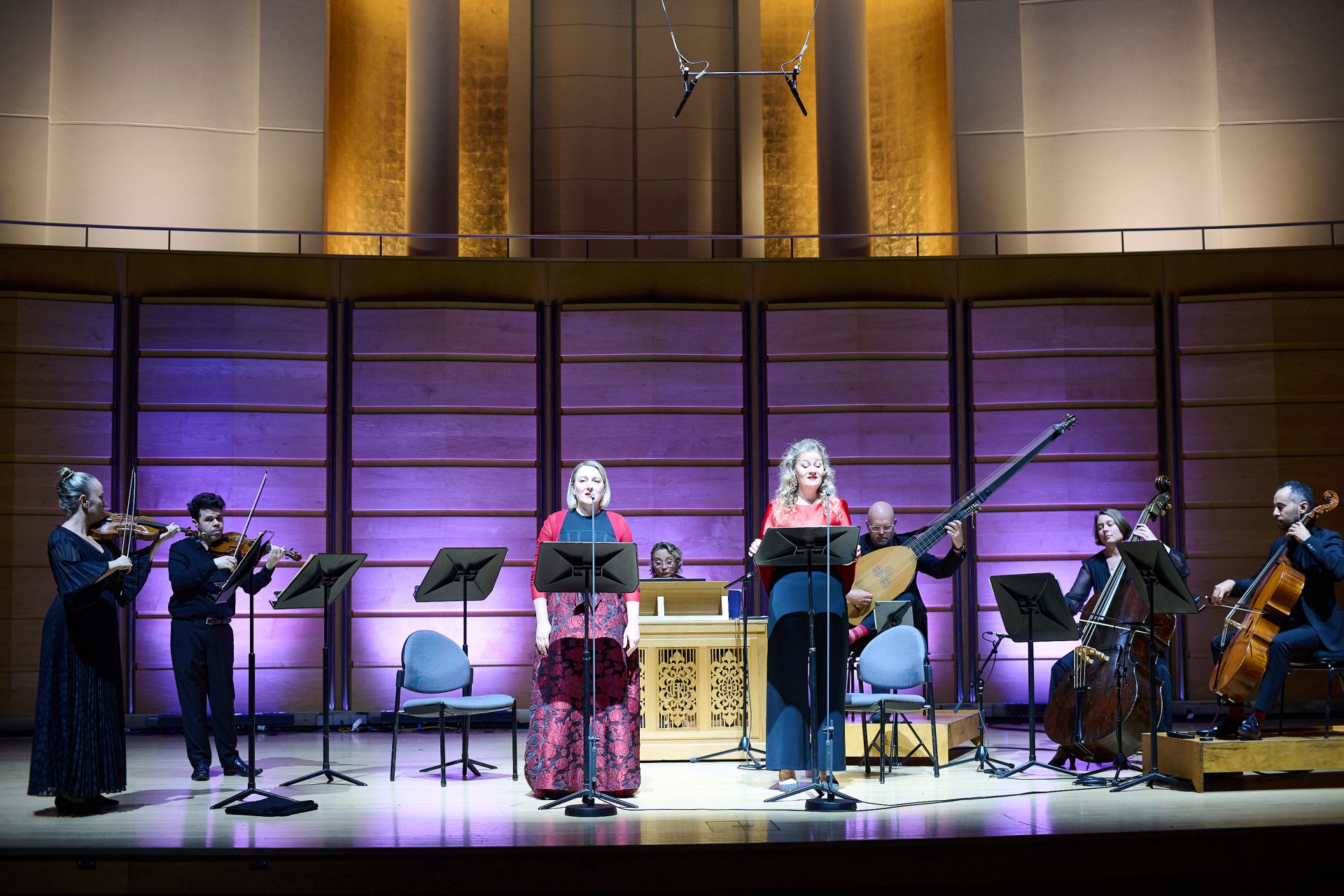A concert styled “Heavenly Sopranos” promises much. But with a line-up like Celeste Lazarenko and Helen Sherman, it becomes apparent that the title is no mere puff.
This concert was one of the Australian Haydn Ensemble’s annual adventures into the soundworld of the Baroque. That is a welcome thing; and I hope the ensemble continues to do it, and do it more often.
First was a set of excerpts from Hasse’s sacred oratorio. Hasse distinguished himself in the opera halls of the Italian states. Though Hasse evidently swapped the profane for the sacred, none of the dramatism was lost. Why must the devil have the best tunes? First was a Sinfonia e Recitativo. The Sinfonia was richly Italian. One would never think its begetter was North German. It features a motif redolent of dropping tears. This paves the way for St Peter’s recitative “Weep oh wretched heart!” Skye McIntosh and Matthew Greco conveyed the dramatism of the text very well on strings. Some parts of the aria “Crucifixum si videres” look forward to Pergolesi’s Stabat mater.
But the highlight was by far the aria, Mea tormenta. It has all the hallmarks of Italian opera. The harmonic sequences were strikingly similar to the dramatic Vivaldian arias, like In furore iustissimae irae. Sherman’s coloratura on “crucem date” was remarkably accurate. Those words (“I seek the cross, give me the cross”) dwell on a theme explored famously by Bach in his Ich will gerne den Kreuzstab gerne tragen, but the form of pathos here is quite different – more violent than resigned. Just as impressive was McIntosh’s and Greco’s performance on violin, which was in all respects faultless and had the audience on the edge of their seats. This was no mean feat for an ensemble with smaller forces.
Durante’s Concerto No 1 in F minor was next. The Un poco andante centred on a falling chromatic bass – which is Baroque for ‘lament’. The chromatic theme continued with the next movement – an Allegro. The counterpoint was also denser. The interjections on the double bass were played with a fittingly guttural effect by Pippa Macmillan.
It was a nice intermezzo to cleanse the palette before Pergolesi’s Stabat mater. The setting of the Stabat mater captivated many Italian and Spanish composers, including Boccherini. But Pergolesi’s was by far the most popular and it became one of the most celebrated sacred works of that period. Jean-Jacques Rousseau, a man who has not left to posterity a reputation for overt praise (as his confreres across the Channel well realised), said of the opening movement that “it is the most perfect and touching duet to come from the pen of any composer”.
One can readily see why. It is delightfully simple, based as it is on ascending dissonances. Sherman and Lazarenko were engaged in dialogue throughout. In the Cujus animam gementem, McIntosh has the strings and voice relish a violent pause. It becomes something of a motif. This has a nice touch, and is a good example of the thought McIntosh invests in the musical direction of each piece. The Quae morebat et dolebat was played at a brisk dance pace.
In the Quis est homo we see another nod to the chromatic on the words “In tanto supplicio” and “Dolentem cum filio” by Sherman and Lazarenko respectively. Sherman has a voice throughout that is as soft as velvet. The Fac ut ardeat cor meum was the most interesting. It is a duet that seeks to convey a sense of urgency. Pergolesi progressively tightens the stretto throughout, to give the impression of quickened pace. McIntosh was at her most lyrical on violin in the final, Quando corpus morietur. The closing “Amen” has tone of admonition and instruction about it. Again, the double bass brought this out nicely.
The entire work has an incredible sense of artistic economy, depicting the text in the most efficient, simple and elegant way possible. It achieves what Monteverdi had always longed for – for the music to be subservient to the words.
